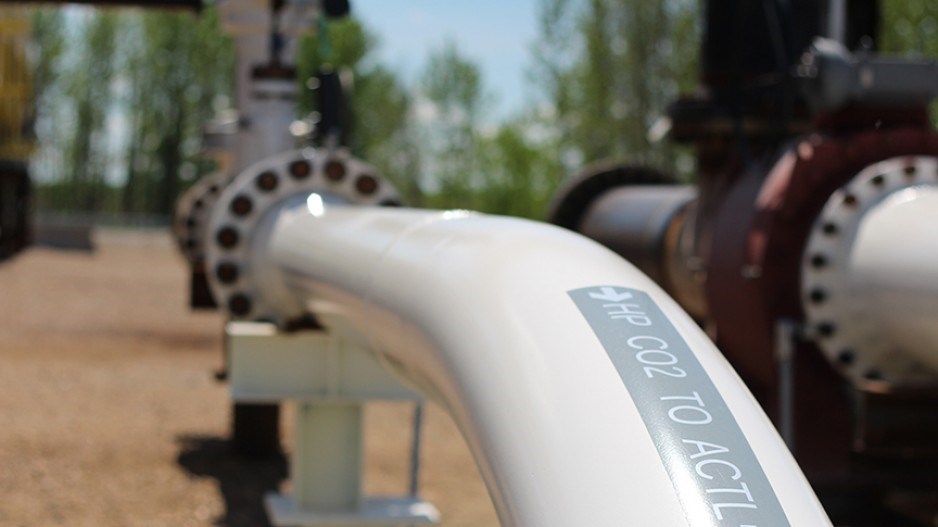If there’s a silver lining to the global COVID-19 pandemic, it’s that a self-induced global recession is expected to drive greenhouse gas emissions down by about 8% in 2020, and there is now an opportunity to make that decline “structural,” according to the International Energy Agency (IEA).
The IEA urges governments to focus post-pandemic economic stimulus spending and policies on a clean energy transition – one that will create new jobs and stimulate economies, while holding greenhouse gases (GHGs) at or below pre-pandemic levels.
The plan’s goal is to prevent GHGs from spiking back up the way they did after the 2008-09 recession.
“After the financial crash in 2008, there was a rapid rebound in the use of fossil fuels,” said Michael Bradshaw, professor of global energy at the University of Warwick’s Warwick Business School. “Within two years we returned to the same path of growing carbon emissions we would have been on if the crisis never happened. World leaders face a similar decision this time. They could aim for another quick and dirty recovery, increasing fossil fuel consumption to get the economy back on track.”
“Or they can double down on the promises of clean, green growth outlined in the Paris Agreement and treat the recovery as an opportunity to decarbonize their economies.”
With the participation of member countries, including Canada, the IEA, working with the International Monetary Fund (IMF), produced a three-year road map for kick-starting sustainable economic growth.
“The plan would make 2019 the definitive peak in global emissions,” the IEA report states.
The Canada West Foundation likewise is encouraging the Canadian government to focus on a low-carbon economic recovery. It urges Ottawa to focus efforts on fuel-switching (from coal power to natural gas) and to consider nuclear power as “a serious option.”
Globally, the IEA-IMF plan calls for $1 trillion in focused spending each year over three years. It estimates that would generate 1.1% global GDP growth, save or generate nine million jobs each year and reduce global emissions by 4.5 billion tonnes.
It may be an especially opportune time for accelerated fuel switching, according to Moody’s Investors Service, given that the pandemic and an oil price war have crippled the oil and gas sector.
A protracted economic recovery could reduce global oil demand by five million barrels per day (bpd) by the end of 2020, Moody’s estimates.
“If global oil demand is five million bpd lower at the end of 2020, the prospects for a return to 2019 demand levels become more uncertain and suggest that last year may have represented an all-time peak,” Moody’s predicts.
The IEA plan identifies 30 potential areas for accelerated investment or policy pushes. For Canada, those areas could include:
•national energy efficiency retrofits for older homes;
•mandated methane reduction in oil and gas;
•carbon capture and sequestration;
•diversifying the natural gas sector through hydrogen production;
•converting coal power to natural gas; and
•power grid enhancements.
Most of the initiatives are already contained in federal and provincial climate change and energy plans.
The IEA urges governments to accelerate those plans – especially shovel-ready projects – as part of whatever post-pandemic economic recovery they come up with.
As the Canada West Foundation points out, an 8% decline in GHGs this year from lockdowns wouldn’t even come close to meeting Paris Agreement targets, even if they became permanent.
“We need almost a moonshot,” said Patrick Smith, policy analyst for the Canada West Foundation. “Fuel switching needs to occur at a really rapid pace.”
In Alberta, significant GHG reductions could be realized through carbon capture and sequestration.
Typically, carbon capture projects are costly and take years to permit and build. But in Alberta, the basic infrastructure is now in place to expedite those projects.
Just last month, the Alberta Carbon Trunk Line was officially commissioned. The new 240-kilometre pipeline carries CO2 captured from the Sturgeon oil refinery and Nutrien (NYSE:NTR) Redwater Fertilizer Facility to oil fields in southern Alberta for enhanced oil recovery.
The pipeline now provides the basic infrastructure for other industries or refineries to tap into. It has the capacity to sequester 14.6 million tonnes of carbon dioxide per year – equal to 2.6 million cars being taken off the road.
Another measure that could be accelerated in Western Canada is a 45% reduction in methane emissions in the oil and gas sector. Federal and provincial plans already aim for that reduction by 2025. Accelerated, it could put a lot of oil and gas service companies to work.
The Canada West Foundation says natural gas should play a role in efforts to phase out coal power in Alberta and Saskatchewan. The IEA likewise promotes increased natural gas use as part of its three-year plan.
“Based on current commodity prices … we estimate that cost-effective coal-to-gas switching in the power sector could reduce global emissions by around 340 [million tonnes of CO2],” the IEA estimates.
The foundation also urges diversification in the oil and gas sector, and one emerging opportunity for that sector is hydrogen production – something the Pembina Institute also supports.
Most hydrogen is currently made from natural gas. Injected into natural gas streams, it can reduce its carbon content, and it is needed for a growing hydrogen fuel cell market, especially in Asia.
Last year, a report commissioned by B.C.’s Ministry of Energy, Mines and Petroleum Resources, FortisBC (TSX:FTS) and the BC Bioenergy Network recommended the B.C. government earmark $176 million over five years to kick-start a hydrogen industry.
“I think we are always working to innovate and see where the puck is going, and hydrogen is, I think, one of those opportunities,” said Josha MacNab, the Pembina Institute’s national policy director. “It’s not a full-fledged part of our economy right now, but it is poised to be.” •




